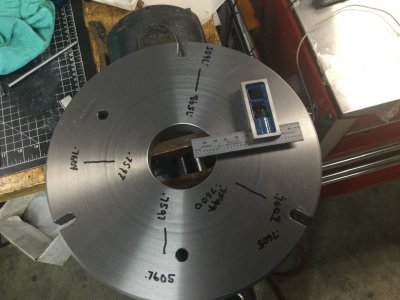That's not supposed to happen. The crossfeed is exactly perpendicular to the spindle axis. There should NEVER be a taper (a lathe wouldn't be of much use if it did). Also, you only took a skim cut, so there wasn't all that much cutting pressure from the tool. One question, tho, did you lock the apron when you did the cut? If you cut center to rim, the cut could push the carriage back slightly if not locked. If you cut rim to center, I'm at a loss to theorize as to why the rim is thicker than the center. My best guess would be one of the two issues we discussed in an earlier post (the chair and the none single point supports).


